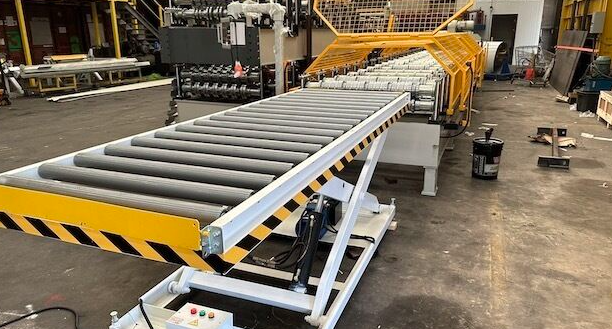
Posted on Monday, September 30, 2024
A runout table is a critical component in a roll forming production line, positioned at the end of the line to support and handle finished products as they exit the machine. It serves as the final step in the process, where formed metal sheets, panels, or other parts are guided and received after being shaped by the roll forming machine.
Once the metal strip passes through the roll forming machine and is cut to the desired length, it moves onto the runout table. Here's how it functions:
In summary, the runout table is vital in ensuring that the formed products are handled carefully, maintaining their quality while improving production efficiency. Without a runout table, the final products could become damaged or improperly handled, leading to inefficiencies and increased labor costs.

32/1000 Box Profile Roll Forming Machine – Complete Guide & Specifications
Posted on Sunday, November 16, 2025
High-performance 32/1000 box profile roll forming machine for roofing and cladding. Full specifications, profiles, applications, pricing

PBR / R-Panel Roll Forming Machine – Complete Guide & Specifications
Posted on Sunday, November 16, 2025
PBR / R-Panel roll forming machine for roofing and wall cladding. Full specs, profiles, applications, pricing, and global buying guide. Built to order.

Posted on Sunday, November 16, 2025
How to Diagnose and Fix the Hidden Electrical Problems That Cause Downtime
Copyright 2025 © Machine Matcher.